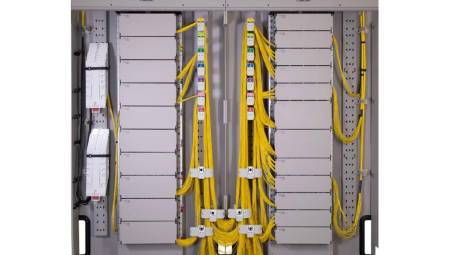 Brazil. The large volume of meetings and consultations in a company or clinic requires a system of programming rooms to avoid confusion and waste of time. Operational optimization should start there, as this promotes productive improvements for professionals. But how to create an efficient system for these appointments?
Brazil. The large volume of meetings and consultations in a company or clinic requires a system of programming rooms to avoid confusion and waste of time. Operational optimization should start there, as this promotes productive improvements for professionals. But how to create an efficient system for these appointments?
To provide some answers in this regard, the Discabos Group prepared a document with some points in this regard:
Why is it important to have a room scheduling system?
When professionals can check room availability on their own digital dashboard, they avoid wasting time searching for vacant spaces and don't bother ongoing events by knocking on the door to find out which places are empty.
The system should also avoid confusion related to scheduling two different events on the same date, place and time, leading to one of the groups having to resign, postpone or transfer the schedule to another room that is not properly equipped.
And that's not all. The system should show which rooms are ideal for each type of event, which are frequently used and which are not. Therefore, it is possible to discover the spaces that generate the most income and those that cause the most maintenance costs, being able to readjust them for the best use.
How to create an efficient programming system?
Depending on the importance of the scheduling system, we have separated some of the main tips so that you can create an efficient control panel in the company or office.
1. Use technology to your advantage
Many businesses and offices still use spreadsheets, but they are unreliable due to the risk of unauthorized data changes and loss of information due to manual errors.
Therefore, the first step in developing a good room scheduling system is to rely on safer technological resources and the right tools for calendar management. Nowadays, it is already possible to find solutions developed exclusively for this purpose in the market, in particular the most used are usually those of Google or Microsoft.
2. Incorporate the rooms into the system.
The system must present a grid of rooms with the status of reservation and occupancy in real time on the screen and offer the possibility to schedule and cancel through the Internet. Each state should also contain more details, such as the day, time, and period of occupancy, in addition to the schedule that will take place.
Then, after hiring the services of your own system, assign a name to the rooms and insert each of them into the calendar. Don't forget to detail their respective features and resources, such as audio and video systems and connection via Wi-Fi, in the process.
3. Appointment signage in each room
To avoid interruption issues in rooms that are occupied and allow staff to have an instant meeting without using the online calendar, you will need a system that allows you to indicate the scheduling schedule on the door of each room.
These solutions are based on software that integrates with the calendar system and displays this programming on fixed panels on the doors of the rooms. The Discabos Group has two options: JOAN and the CRESTRON panel. Click on the links to see more information about them. Be sure to receive our free training on the Crestron solution.
4. Involve professionals.
Before implementing the system, promote testing and training for the professionals who will use it. To save time, you can combine the two steps, as the test performed by users promotes extensive knowledge and experience.
The room scheduling system serves as a great tool for installers to develop a competitive advantage and retain customers. This is because, with it, it is also possible to offer other audio, video and automation solutions for companies to reach a new level of operational optimization and productivity. That is, both sides, users and installers, should benefit from the solution.















